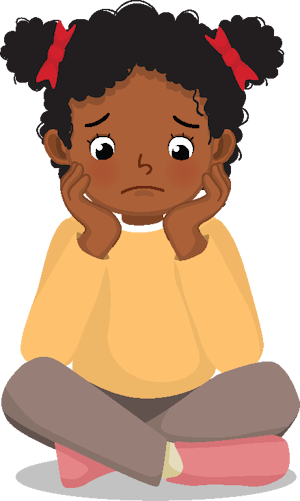The Double Whammy: ADHD + DCD
Attention Magazine August 2024
Developmental coordination disorder is a common condition that co-occurs with ADHD. About fifty percent of school-age students with ADHD also have DCD; yet this often goes unrecognized, and students miss out on the help that could be available to them.
DCD is a developmental motor disorder that results in performance of everyday activities that require motor coordination being substantially below that of age expectation. It significantly interferes with academic achievement or activities of daily living that is not due to a medical condition. DCD manifests in marked delays in achieving motor milestones, dropping things, often described as “clumsy,” generally poor in sports and handwriting.
Like ADHD it has been called different things at different times: minimal cerebral palsy, minimal brain dysfunction, clumsy child syndrome, developmental dyspraxia, mild motor disorder. In 1994 at the International Consensus Meeting in Canada, it was agreed to use the term developmental coordination disorder, and it has been called that in the DSM since that time. The term “dyspraxia” is still sometimes used, but dyspraxia means “difficulty with motor planning.” It is indeed a symptom of DCD, but dyspraxia should not be used to describe the disorder.
Like ADHD, DCD is a developmental disorder. Motor skills change over time as the child grows and the nervous and muscular systems develop. For example: most children achieve dominance of either their left or right hand by the age of five, many even earlier. With a motor delay the child continues to use both hands much longer, which results in a child having a much more skilled nondominant hand than most children, but also a less skilled dominant hand—the result of which is often weaker pencil skills in the early years.
The importance of early diagnosis
In school, children with poor fine motor skills such as handwriting and scissor skills are typically picked up in the early school grades. However, children that exhibit ADHD and DCD are often not picked up, as the teachers are more preoccupied with the inattention and/or hyperactivity behaviors and overlook the fine motor issues. These students therefore continue to be frustrated by their inability to keep up with their peers and are not identified as needing help from a specialist.
 A diagnosis of DCD is made after careful observation and evaluation, often by an occupational therapist in the school system. Many doctors are not able to diagnose it in their offices and depend on reports from aware parents and teacher.
A diagnosis of DCD is made after careful observation and evaluation, often by an occupational therapist in the school system. Many doctors are not able to diagnose it in their offices and depend on reports from aware parents and teacher.
In Sweden, the term DAMP—deficit of attention, motor planning, and perception—is used to describe the combination of ADHD and DCD. They have been studying this for many years, and the outcomes of students followed from the age of seven to twenty-two years showed that the combination of ADHD and DCD was the most important predictor of poor psychosocial functioning in early adulthood. This research suggests that it is important to screen for these disorders early in order to start therapies promptly.
We know that ADHD rarely occurs alone and that most children with ADHD will have at least one other diagnosis such as dyslexia, anxiety, sleep disorder, and so forth. About fifty percent of children diagnosed with ADHD will have co-occurring DCD but many go unrecognized. The problems can be gross motor and/or fine motor. They are typically seen as messy eaters and have difficulty dressing, tying shoes, and catching balls. They are seen as clumsy and often avoid busy playground activity. They can have poor fine motor skills, avoiding Legos and puzzles, and have poor handwriting and scissor skills.
Is it important? After all, now we have Velcro for shoes and everyone uses computers, so they don’t need to write, do they? Alas, in school, the accommodation for the student to use a computer or tablet instead of pen and paper is not often accompanied by the teaching of keyboarding skills. It is the same fingers that are needed to type as to skillfully use a pencil.
In the long run, keyboarding will be essential for all students, but it needs to be recognized that children with DCD will take longer to learn to type than those without DCD. And they will need a solid program to teach them to develop those skills beyond just playing on their tablets.
Where to go for more help and advice
Speak with your child’s teacher and ask if there is an occupational therapist in the school that could do an observation and/or evaluation and provide advice on accommodations that are available to the student in school.
If your child’s ADHD symptoms are well controlled, the teachers are more likely to be aware of the DCD symptoms.
The CanChild website from McMaster’s University in Canada offer excellent handouts for parents, teachers, doctors, therapists, and others. Their work is well researched, and they lead the field in this area. Their handouts are also available in several languages. Much of the information provided in the sidebar on page ____ is taken from their handouts, which are available to all free of charge.
Characteristics of a Child with DCD
The child may:
- Be clumsy, or awkward in his or her movements; for example, they may bump into, spill, or knock things over.
- Experience difficulties with gross motor skills (whole body), fine motor skills (using hands); or both.
- Be delayed in developing motor skills such as riding a bicycle, catching a ball, doing up buttons, tying shoes, etc.
- Have difficulty learning new motor skills.
- Have more difficulty with activities that require constant change in body position or having to adapt to changes in the environment, such as baseball or tennis.
- Have difficulty with activities that require coordination of both sides of the body, such as cutting with scissors, swinging a bat.
- Exhibit poor postural control and balance in activities that require balance, such as climbing stairs or standing while dressing.
- Have difficulty with handwriting.

The child may:
- Show lack of interest in or avoid activities that require a physical response. For a child with DCD, performing motor skills requires significant effort. Fatigue and repeated failure may cause the child to avoid such activities.
- Demonstrate a low frustration tolerance, decreased self-esteem, and a lack of motivation due to difficulties coping with activities that are required in all aspects of life.
- Avoid socializing with peers, particularly on the playground. Some children seek out younger children to play with, while others will play on their own or follow the adult.
- Seem dissatisfied with their performance; for example, the child erases written work, complains of performance in motor activities, shows frustration with work products.
- Be resistant to changes in routine or environment. If the child has to expend significant effort to plan a task, even a small change in how it is to be performed may present a significant problem to that child.
The child may:
- Have difficulty balancing the need for accuracy and speed; for example, handwriting may be very slow.
- Have difficulty with academic subjects that require handwriting to be accurate and organized on the page, such as mathematics, spelling, or written language.
- Have difficulties with activities of daily living, such as dressing, using a knife and fork, brushing teeth, doing up zippers, organizing a backpack.
- Have difficulty completing work within an expected time frame.
- Have general difficulties organizing their desk, locker, homework or space on a page.
It is not uncommon for parents or educators to be told that a child will grow out of their difficulties. However, studies have now shown quite conclusively that most children do not outgrow their problems. While children do learn to perform certain motor tasks well, they will continue to have difficulty with new, age-appropriate tasks. It is important to recognize these motor difficulties because children with DCD are more likely to develop academic and behavioral problems, demonstrate low self-esteem, depression, and anxiety, and they are at greater risk of becoming overweight.
The role of therapists
Occupational and physical therapists (OTs and PTs) are educated and trained in analyzing motor skill development and in determining the ability of a child to cope with the demands and activities of everyday life. In today’s school systems, therapists often function in a consultant role, observing the child performing tasks that are difficult for them and making recommendations to the parents and educators.
These recommendations may include strategies or accommodations to assist with tasks at home, at school, or in the community; modifications to the child’s environment, ways to promote physical activity and increase participation, guidelines on choosing community leisure and sports activities that are matched to the child’s interest and abilities; and assistance with setting appropriate expectations to ensure success.
Therapists can help parents, educators, and the child to develop a better understanding of the coordination difficulties that the child is experiencing so that they become aware of their strengths as well as their limitations. This will help them gain an understanding of ways in which they may compensate for difficulties and be more likely to experience success, thus becoming more willing to attempt activities that are difficult for them.
If a child is experiencing particular difficulties or demonstrating secondary emotional and behavioral problems, the therapist may work individually with a child. The therapist may do some direct skill teaching of motor tasks that the child needs or wants to learn. They may use a cognitive approach that teaches the child problem-solving strategies that will help the child learn new motor tasks.
How to help at home
At home, parents can:
- Encourage the child to participate in games and sports that are interesting to their child and which provide practice in, and exposure to, motor activities.
- Try to introduce the child to new sports activities or a new playground on an individual basis before the child is required to manage the activity in a group.
 The child may prefer and perform better at individual sports such as swimming, running, cycling, skiing, rather than team sports. If this is the case encourage interaction with peers through other activities such as cub scouts, music, drama, and so forth.
The child may prefer and perform better at individual sports such as swimming, running, cycling, skiing, rather than team sports. If this is the case encourage interaction with peers through other activities such as cub scouts, music, drama, and so forth.- Encourage the child to wear clothing to school that is easy to get on and off, such as sweatpants and garments with Velcro fastenings. Teach the child to manage difficult fastenings when you have time and are not in a rush.
- Encourage the child to participate in practical activities that will help improve planning and organizing, such as setting the table, organizing shopping lists, packing picnics, etc.
- Recognize and reinforce the child’s strengths. They may have good reading skills, a creative imagination, sensitivity to the needs or others, and/or strong communication skills.
Help at school
Educators and parents need to work together to ensure that the child with DCD and ADHD experiences success at school. An Individualized Education Plan (IEP) may be needed for some, while others may benefit from simple classroom support using the MATCH approach:
Modify the task: allow more time, use of a keyboard, etc.
Alter expectations: allow alternative methods of task completion to lower frustration in the child while experiencing learning and success.
Teaching strategies: use appropriate strategy for a child with special needs.
Change the environment: minimize the environmental factors that make the performance difficult for the child, such as seating and positioning of child at desk and in room, noise level, visual distractions.
Help by understanding the nature of the coordination difficulties. When the child is understood they are more likely to attempt new challenges and to persevere until they achieve success.


 Zara Harris, MS, OT, is a pediatric occupational therapist with many years of experience working with children, teens, and adults with ADHD and coexisting conditions. She has worked in private practice and in schools around the world. She has presented internationally on ADHD, DCD, handwriting, and using technology to compensate for weaknesses. Harris served on the planning committee for the Annual International Conference on ADHD for many years. She is the deputy chair of the editorial advisory board for CHADD’s Attention magazine.
Zara Harris, MS, OT, is a pediatric occupational therapist with many years of experience working with children, teens, and adults with ADHD and coexisting conditions. She has worked in private practice and in schools around the world. She has presented internationally on ADHD, DCD, handwriting, and using technology to compensate for weaknesses. Harris served on the planning committee for the Annual International Conference on ADHD for many years. She is the deputy chair of the editorial advisory board for CHADD’s Attention magazine.